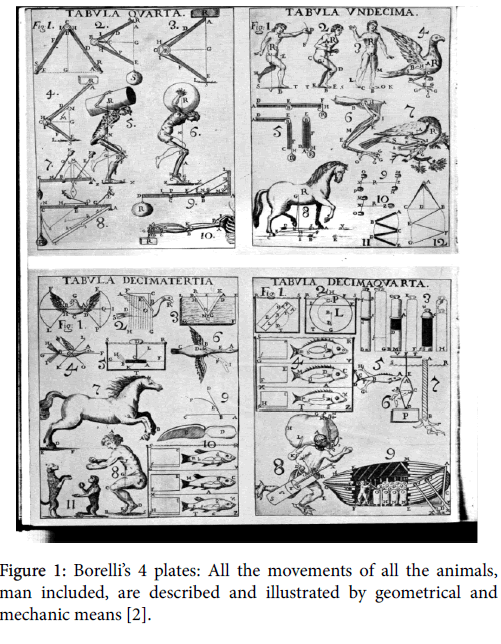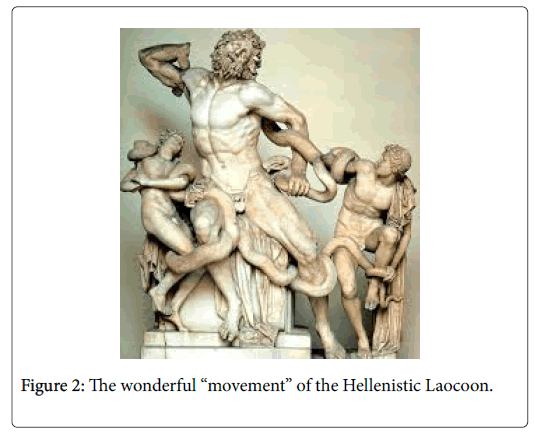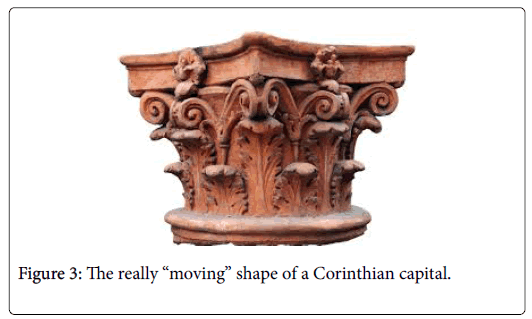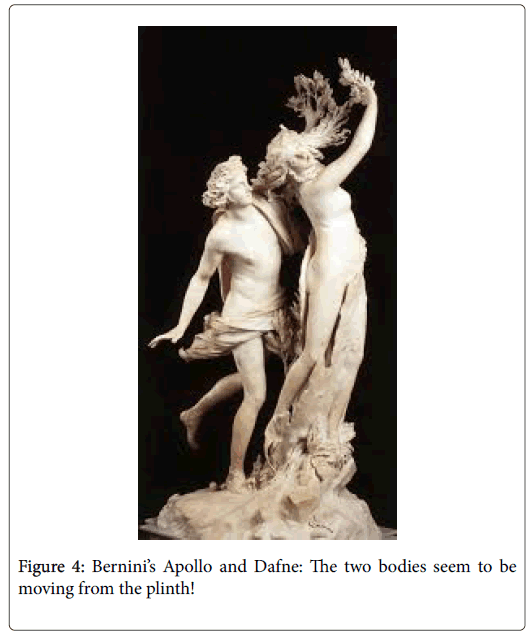A Brief Historical Survey of the Anatomophysiology of the Human Body (from “humani corporis fabrica” to “humani corporis machina”)
Received: 23-Jan-2018 / Accepted Date: 27-Jan-2018 / Published Date: 31-Jan-2018
Abstract
The ancient Greek and Latin anatomo-physiologists from Hippocrates (460-390 BC) to Galen (129-199 AD), as well as all the subsequent ones till the 17th century conceived every body of every living animal, man included, as consisting of well organized “parts”, each of which in its turn was not only characterized by four “qualities” (attracting, retaining, transforming and expelling “virtues” or “faculties”) but also by the difference between “similar” and “dissimilar parts”. This fundamental difference that was a faint intuition of the difference between our “tissues” and “organs” was foreshadowed by Hippocrates, improved and perfected by Aristotle (384-322 BC), inherited by Galen and by all the subsequent anatomo-physiologists till Giovanni Alfonso Borelli’s (1608-1679) and his disciple’s foundation of the so-called “iatromechanic School” that is nothing but the application of the “Galilean scientific revolution” to the field of Medicine in general and of Anatomo-physiology in particular: All the Hippocratic, Aristotelian and Galenic “qualities” and “virtues” that although seemed to explain everything, nonetheless explained nothing at all were replaced by the “quantities” that can at last be expressed mathematically! Infact neither the “virtues/faculties nor the “qualities” can be “quantified” and this is why none of the pre-Galilean scientists could ever enunciate any “scientific law” in the modern sense of the word.
Keywords: Anatomophysiology; Human body; Temperament; Microscopic anatomy
Introduction
According to all the “pre-Galilean” anatomo-physiologists our “tissues” and “organs” were nothing but “parts” of any living body, man included. The only difference between these “parts” was that between “similar” and “dissimilar” ones: The first were those, the minimal components of which was the same of the whole “part”: For instance the nature of the minimal components of a vein, of an artery, of a muscle, etc., was that of the whole vein, artery or muscle, whilst the nature of the minimal components of the “dissimilar” ones was that of an artery, a vein, a muscle, etc., for instance the nature of the minimal parts of the heart was that of an artery, a vein, a muscle, etc. As for what we call “function” of each “similar” and “dissimilar part” it was simply the “task”, which nature endowed it with.
Moreover each “similar” and “dissimilar” part was characterized by a couple of the four “qualities” (hot, dry, wet and cold) and provided with the four “virtues” (attracting, retaining, transforming and expelling): For instance the liver attracted the chyle from the bowels retained it transformed it into venal blood which in its turn was expelled and sent to the whole venal system; once it reached the left ventricle of the heart it was retained into it and passing throw the inter-ventricular septum which was thought to be pervious it passed to the right ventricle and after having been transformed into arterial blood reached all the other parts of the body. Moreover the heart was “hot and wet”, whilst for instance the brain was “wet and cold” and so on for every “part” of a living body.
It was not yet enough: Every living body was provided with four “humours” (blood, phlegm, black and yellow bile) whose “temperament”, i.e. their perfect “balance” specified from the one hand the character of every living animal, man included and its healthy condition, whilst their imbalance was the cause of diseases. By consequence, should the “balance” of the humours of a living animal, obviously man included, for instance 35% blood, 25% phlegm, 20% black bile and 20% yellow bile, it enjoyed a “bloody temperament”. By contrast should the “balance” of the humours be 35% phlegm, 25% blood, 20% black bile and 20% yellow bile its “temperament” was “phlegmatic” and so on.
As the man is a “microcosm” exposed to the conditions of the “macrocosm”, i.e. the different seasons, winter, for instance which was considered to be “cold and wet”, increased the percent of phlegm, it’s too cold and wet caused an imbalance of the humours and by consequence, diseases like grippe and cold.
As for the bones, they were the frame of all the different both “similar” and “dissimilar parts”.
These being the facts every living body was conceived as a “fabrica”, i.e. a “factory”. Suffice it not only to read Galen’s treatise “On the natural faculties” in which the author argues with the Hellenistic anatomo-physiologist Erasistratus (1st half of the 3rd century BC) mechanical interpretation of uropoiesis and blood movements but also to remember that the title of Andreas Vesalius treatise, inspite of its the rather alleged ““anatomical revolution”” is still “De humani corporis fabrica libri septem”.
Let us now read at least two passages of Galen’s treatise “On the natural faculties”, which clarify the whole matter. The first reads as follows: “Nature forms bones, cartilages, nerves, membranes ligaments, veins and so on at the very beginning of the formation of the living animal having recourse to the “generative” and “alterative faculty” to use general terms and either the warming, cooling, drying and wetting ones in particular, or to those which derive from a mixture of them like for instance, those which create bones as well as nerves, cartilages”.
The second reads as follows: “I agree with those, who maintain that urine is filtered through the kidneys. Well then, let us consider how this filtration occurs. In any case the urine reaches the kidneys either by itself, considering that this fact is the best for itself, like when we shop at the market or if this is impossible we must discover another explanation of its movement. Which will it be? Should we not considered that the kidneys are provided with some virtue which attracts the quality of the urine as Hippocrates maintained we will not find any else explanation. It is clear to everyone that either the kidneys attract, or the vein push if urine doesn’t move by itself. However should the veins contract and push, they will not push into the kidney only the urine but also the whole blood they contain. Should this be impossible as I will prove the only possible alternative is that the kidneys attract”.
This “qualitative” and therefore “animistic” and “finalistic” perception of all the “parts” not only of a living body but also of the “macrocosm”, i.e. the “environment” that surrounded every “living body”, man, animals and even vegetables included, in few words the whole “universe” and its celestial spheres lasted till the 17th century, i.e. till the so called “Galilean scientific revolution”. In order to understand the real meaning of this “revolution” let us read few Galileo’s (1564-1642) passages”. The first reads as follows: “Science is written in this marvellous book that is continually open before our eyes (I mean the universe). However it cannot be read unless one learns in advance the language and the characters in which it is written. It is written in mathematical language and the characters are triangles, circles and other geometric shapes”. The second reads as follows: “As soon as I conceive either of a matter or of a concrete substance, I cannot avoid conceiving at the same time that it has this or that geometrical shape, that it is big or little with respect to others, that it is in this or in that place, in this or that time, that it moves or rests, that it is or is not in contact with another concrete thing, that it is one or more than one but I feel not bound at all to conceive it as white, or red, bitter or sweet, resonant or dumb and my reason could never conceive it endowed with such qualities without the aid of the senses”. In these passages Galileo maintains that from the scientific point of view the universe is nothing but a giant “machine”, the components of which can only be explored and understood by “mathematical” means [1].
Indeed should Galen have seen a swinging pendulum he surely maintained that it swung thanks to its “swinging virtue”. By contrast Galileo maintains that it swings owing to the mathematical ratio of its “quantities”, i.e. the length of its rod, the weight of its ball, the magnitude and frequency of its swing and concludes by enunciating the so-called “law of the pendulum period”, i.e. 2π√l/g. In the same way a stone does not fall down thanks to it “falling virtue”, but as Isaac Newton (1642-1727) affirms because of the “gravitation law”, i. e. F=K Mm/d 2, which means that two bodies attract each other with a force that corresponds to the product of their masses (M=the Earth and m=the stone) divided by the square of their distance (d).
This new “quantitative perspective”, which eliminated once forever all the “virtues” and all the “qualities”, was transferred to the field of anatomophysiology by Giovanni Alfonso Borelli’s genius and was inherited and improved by his exceptional disciple Marcello Malpighi, the founder of the modern “Microscopic anatomy”. All the movements of all the animals, man included, are described and illustrated by geometrical and mechanic means in Figure 1.
Figure 1: Borelli’s 4 plates: All the movements of all the animals, man included, are described and illustrated by geometrical and mechanic means [2].
Suffice it to read one only of Malpighi’s passages, which reads as follows [3]: “I am perfectly aware that the means by which our soul uses our body in performing its works are ineffable. However there is no doubt that in performing growth, sensations and movements our soul cannot avoid working according to the machine, to which it is connected like either a clock or a mill is moved either by a lead or a stone pendulum, or by a beast or by a man. Indeed should it be moved even by an angel, the angel would be forced to move like the beasts do. These being the facts, although I ignored the working means the angel has recourse to, but knew the exact structure of the mill, I would understand perfectly such a movement and such an action and should the mill upset, I would try to repair either the wheels or the different gears, and would leave aside any research concerning the way of working of the moving angel. By consequence, these being the facts it is clear that Medicine may be founded “a priori”, that is to say starting from the knowledge of the causes and the mechanic means nature has recourse to whenever either it is not prevented from acting (that is to say in the case of healthy condition) or is prevented (that is to say in case of illness)”.
It is surely as clear as sunlight that Malpighi agrees with Borelli’s and in the final analysis, with the new “quantitative perception” of both the “macrocosm” (i.e. the Universe) and the “microcosm” (i.e. a living body, man included) as giant and little “machines, just founded by the “Galilean scientific revolution”. However even a “little machine” consists of ever littler machines till the infinitely ones that surely must exist, but cannot be seen with the necked eye, i.e. Francis Bacon’s “mechanismus latens” and Severinus “atoms”. How could they be seen? This fundamental problem which was called “microscope-idea” by the great Historian of Medicine Luigi Belloni (1914-1989) brought to the invention and recourse to “magnifying” instruments which Belloni called “microscope instrument” and to the final birth of Malpighi’s “microscopic anatomy”, that is to say to our modern Anatomophysiology.
At this point a fundamental problem arises: Whence this scientific revolution started? It could surely not be born by a sort of Aristotelian “spontaneous generation”! Although it may be unbelievable, nonetheless there is no doubt that it started from a literary discovery. Indeed after Poggio Bracciolini (1380-1459) brought to light Titus Lucretius Carus (94-55 BC) marvellous poem De rerum natura, in which he explains enthusiastically Epicurus (342/41-272/719) atomistic and therefore strictly mechanistic theory inaugurated by both Democritus (460-370 BC) and Leucippus (flourished 440 BC), “atomism” spread rapidly throughout the whole European both artistic and scientific culture. Suffice it to remember the treatises of the French epicurean philosopher Pierre Gassendi (1592-1655) as well as those of the English philosopher and scientist Francis Bacon (1561-1626), who advocated the scientific research of the “mechanismus latens” (the latent mechanism) and not only Galileo’s “triangles, circles and other geometrical figures”, which are a clearest allusion to something like our “molecules”, but also and mainly in Italy, Lorenzo Valla’s (1407-1457) quite epicurean “De voluptate” (On pleasure) and Marcus Aurelius Severinus (1590-1656) treatise “ZootomiaDemocritaea” (Anatomy according to Democritus atomistic perspective), where he affirms that “anatomy” does not derive from the Greek term “anatomé” (cutting across) but from “an atoma” (till the atoms). As for the Arts (painting, statuary, architecture) suffice it to mention the triumph of baroque style, the main characteristic of which is the pursuit of “movement” and corresponds always to a mechanic perception of all the phenomena. It is worth remembering first of all that the Hellenistic art is just characterized by the “movement” (cf. for instance, either the famous Laocoon (Figure 2), or the exceptionally “moving” shape of a Corinthian capital) (Figure 3), as well as all Gianlorenzo Bernini’s (1598-1680) works the most revealing among which is surely his group Apollo and Dafne (Figure 4)? second that the Hellenistic anatomist Erasistratus advocated a “mechanic” perception of every phenomenon and maintained that “the heart is a pump”, third that the surely greatest of all the Hellenisticscientists, Archimedes (287-212 BC), discovered the “quantitative” “laws of the lever” and the famous and no less “quantitative” “Archimedes principle” and “specific weight”, fourth that the title itself of Borelli’s fundamental treatise is just as said above; De motu animalium (On the movement of animals), in which the author explains all the “movements” of all the animals, man included by “mathematical means”.
It is obvious that, under the “quantitative” and therefore “mechanic” point of view, even “numbers” and “geometrical shapes” cannot at all be still considered as “perfect” and “imperfect”, like they were according to Aristotle and all the subsequent scientists till Galileo Galilei: They become simply the only means to understand both the greatest and the littlest “machines”, i.e. the universe and all the phenomena that surround us. Suffice it to read another of Galilei’s passages: “As for me, I never read the chronicles and the particular nobilities of the geometrical figures and by consequence I don’t know which of them are more or less noble or more or less perfect. However I think that all of them are equally noble or better that, as for them they are neither noble and perfect nor ignoble and imperfect except that cubical ones are more perfect to build walls, whilst the round ones are more perfect than the triangular to move wagons”.
Conclusion
One cannot avoid realizing that we are under the scientific point of view, the children of the Hellenistic scientists and most of all of Galileo, Borelli and Malpighi. However we must confess that the Hippocratic, Aristotelian and Galenic “qualities”, although thrown out of the window entered again and just through the main door.
Indeed we cannot avoid striving after the most difficult solution of the problems concerning not only “quality of life” and mainly “quality of death”, but also the recourse to experiments on animals and the relentless aversion of the animalists, in one word all the great problems of modern “bioethics”, which we are still a far cry from reaching a final and satisfactory solution off.
References
- Galilei G (1890-1909) Il Saggiatore in national edition of Galileo Galilei’s works, VI, Florence, Barbera.
- Belloni L (1967) Response of Dr. Marcello Malpighi to the letter entitled "De recentorum Medicorum study dissertatio epistolaris ad amicum" (Marcello Malpighi's response to the letter entitled) in "Selected works of Marcello Malpighi", pp. 516.
Citation: Musitelli S, Bertozzi MA (2018) A Brief Historical Survey of the Anatomophysiology of the Human Body (from “humani corporis fabrica” to “humani corporis machina”). Arch Sci 2:112.
Copyright: © 2018 Musitelli S, et al. This is an open-access article distributed under the terms of the Creative Commons Attribution License, which permits unrestricted use, distribution, and reproduction in any medium, provided the original author and source are credited.
Select your language of interest to view the total content in your interested language
Share This Article
Open Access Journals
Article Usage
- Total views: 6372
- [From(publication date): 0-2018 - Oct 30, 2025]
- Breakdown by view type
- HTML page views: 5312
- PDF downloads: 1060




